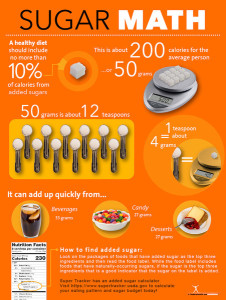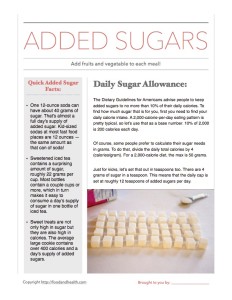Impact of Cooking and Home Food Preparation Interventions Among Adults: Outcomes and Implications for Future Programs
As food and nutrition professionals and public health educators, we recognize the importance of knowing our way around the kitchen to improve health. We recognize that eating meals away from home increases calorie, fat and sodium intake and reduces fiber, vitamin and mineral consumption. ( 1 ) But how do we convey the need for cooking interventions to the populations that need them most or potential funders of such programs? Despite the popularity of cooking shows, food magazines, and social media sites devoted to food and cooking, what does the research say about their impact on patient compliance or healthful behavior?
A recent study published in the Society for Nutrition Education and Behavior reviewed studies conducted from January 1980 to December, 2011. The review looked at how effective interventions were that included cooking and home food preparation. Outcome measures included nutritional intake, knowledge/skills, attitudes toward cooking, self-efficacy/confidence and health outcomes such as BMI, changes in lipids and PSA in one randomized cooking trial with prostate cancer survivors as subjects.
Of the 373 journal articles and 85 educational materials identified, there were 28 appropriate studies identified; 12 that had a control group, 6 as nonrandomized and 6 randomized. In 5 studies, postintervention was provided, pre- and postintervention was done for 23 studies and 15 studies included information beyond postintervention. Both qualitative and quantitative outcomes pointed to a positive effect on main outcomes, but due to the lack of rigorous study designs, different study populations and non-validated evaluation tools used, stronger conclusions could not be drawn.
Some of the more successful studies showing positive impact included pre, post and beyond post intervention. Questionnaires including eating style, pre VS post nutrition education, cooking skills and changes in dietary intake and behavior were used in several studies. Populations varied from U.S. university students, Aboriginal people, South Asian community members and Head Start parents. Nineteen of the studies reviewed looked at the effect of cooking classes on dietary intake. Although study designs were variable, 16 of the studies showed a positive impact on food consumption.
In one study of 212 Urban, African American women in a 20-week intervention group, those that attended a minimum of 5 classes reduced total calories and calories from fat at posttest and follow up. (2) In another study of women treated for breast cancer, 12 monthly cooking classes, use of newsletters and nutrition counseling calls resulted in increased intake of fruits and vegetables, average fiber intake and reduced fat consumption. (3) A study by McMurray, et. al. found that 12-13 monthly nutrition classes taught by registered dietitians resulted in reductions in total and LDL cholesterol in individuals with hypercholesterolemia. (4)
Bottom line:
While there is not a lot of high quality studies on cooking interventions the ones that are successful teach multiple classes. A minimum of 5 classes seems to be a successful format. Perhaps weekly or monthly classes over an extended period of time can be the most helpful. Adding newsletters and phone calls appears to be helpful.
Nutrition and health professionals can find recipes for cooking demos online at https://foodandhealth.com. There is a category for recipes designed specifically for cooking demos https://foodandhealth.com/recipes.php/category/8/cooking-demo/. Additionally more resources including books about cooking demos and tool sets are found at http://nutritioneducationstore.com
Grants for school gardens, cooking classes and cafeterias can be found at http://www.beginningfarmers.org/grants-for-school-gardens-curriculum-cafeteria-cooking-classes/. Finally, www.grantwatch.com is a catch all site you can search to find food and nutrition grants in your backyard.
By Lisa Andrews, MEd, RD
If you really want to polish your skills consider one of our books, a salad theme, or our new upcoming webinar, 10 Successful Strategies for Cooking Demonstrations. Got a question? Ask us!
References:
Ngyun, B. Powell, L. The impact of restaurant consumption among US adults: effects on energy and nutrient intakes. Public Health Nutrition, Volume 17, Issue 11 November 2014, pp. 2445-2452
Shankar, S., Klassen, A.C., Garrett-Mayer, E. et al. Evaluation of a nutrition education intervention for women residents of Washington, DC, public housing communities. Health Educ Res. 2006; 22: 425–437
Newman, V.A., Thomson, C.A., Rock, C.L…., and For the women’s Healthy Eating and Living (WHEL) Study Group. Achieving substantial changes in eating behavior among women previously treated for breast cancer—an overview of the intervention. J Am Diet Assoc. 2005; 105: 382–391
McMurry, M.P., Hopkins, P.N., Gould, R. et al. Family-oriented nutrition intervention for a lipid clinic population. J Am Diet Assoc. 1991; 91: 57–65


























